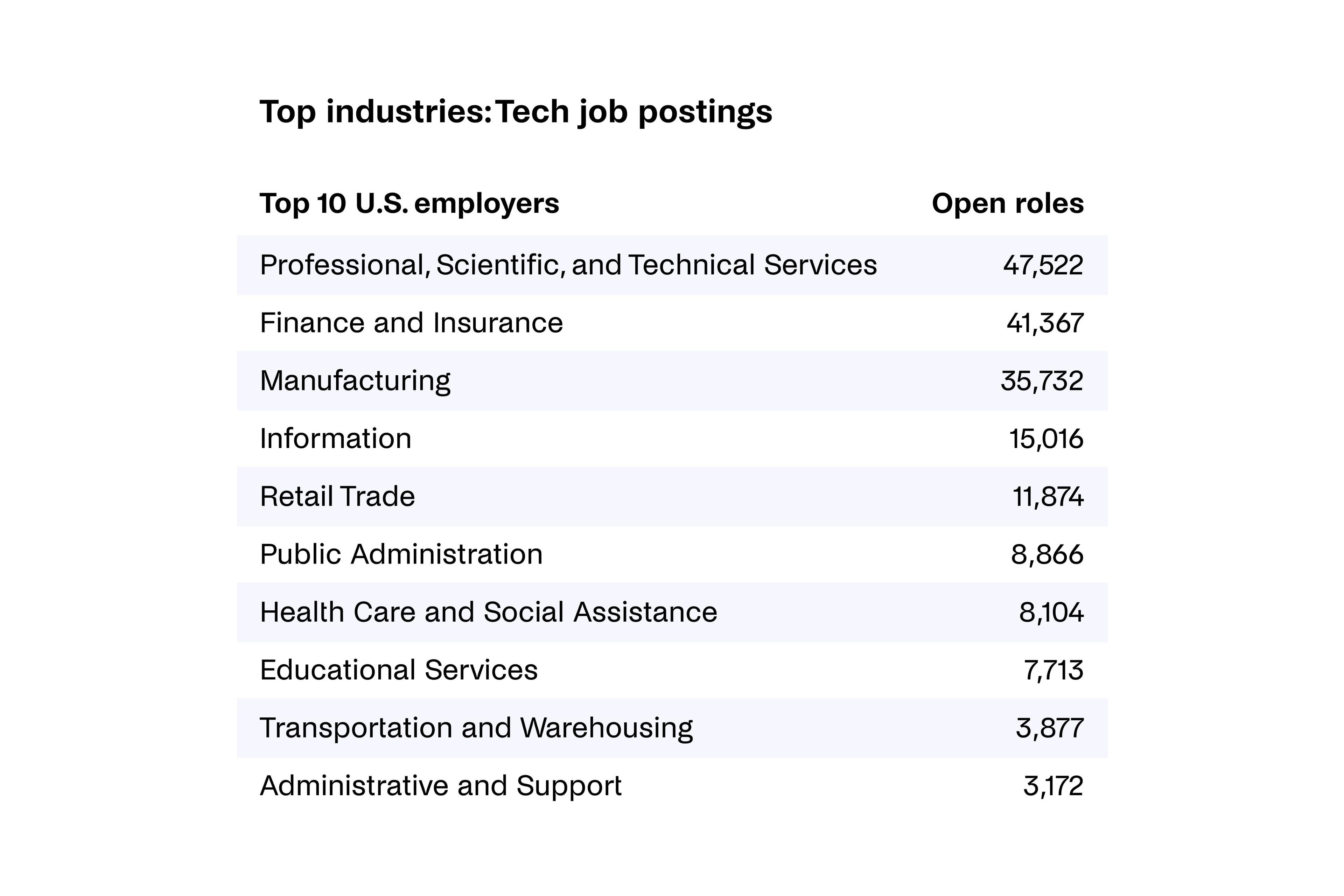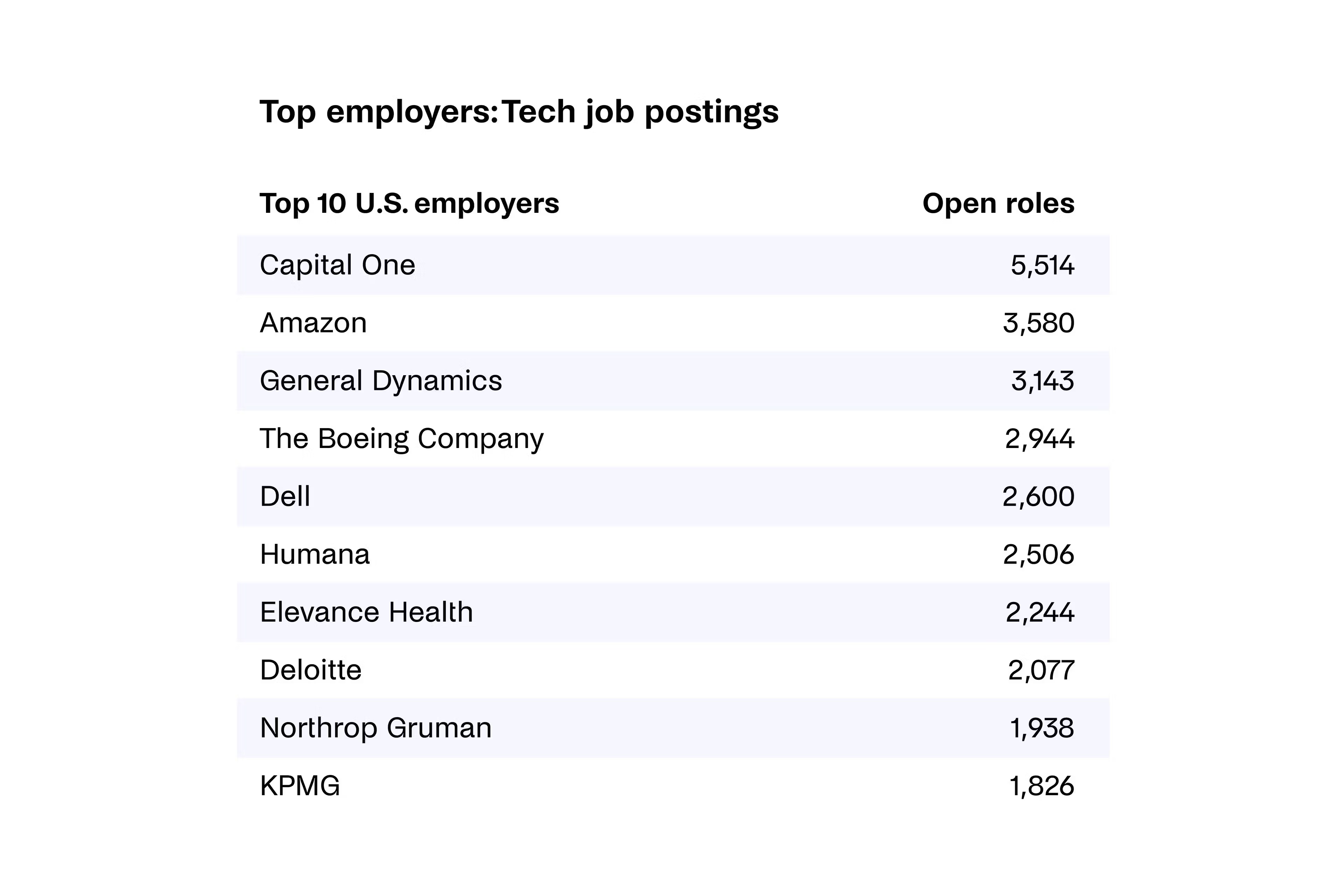Gen Z is showing strong interest in working for Software & Technology companies. On Handshake’s platform, tech companies receive the most applications of any industry. More and more of Gen Z is choosing to study tech-related fields, with Computer Science and Computer Systems Networking among the top 5 majors of the Class of 2023.
But, the reality of winning this talent is more nuanced.
A year of negative industry headlines coupled with industry-wide layoffs is giving stability-minded Gen Z pause. This is coming at a time when hiring for tech talent is becoming more competitive than ever, as nearly every industry undergoes digital transformation.
So which tech industry trends do you need to know to win over Gen Z? Keep reading to learn where you might be falling short—and how you can catch up.
Tech industry trend #1: Building a brand dedicated to DEI
Gen Z is the most diverse American generation, and diversity consistently ranks at the top of their list when Gen Z is considering an employer. A Handshake study found that 60% of Gen Z researches diversity in an employer’s leadership when considering companies.
While there has been progress to increase diversity within traditional Software & Technology companies, the industry is still lagging behind. While almost all underrepresented groups are not proportionally reflected within Software & Technology, this issue remains especially prevalent with women.
One study by McKinsey found that across every major industry, Hardware Technology companies had the fewest women in leadership roles of any industry, at just 14% represented in VP+ roles. Technology software companies ranked slightly higher, at only 27%. In fact, women technologists make up just 26.7% of the tech workforce, and less than 8% of tech workers are Black. Even more shocking is that 83% of tech executives are white—80% of whom are men.
Early talent wants to see themselves reflected in the workforce at every level of an organization. Talent who don’t see themselves reflected in company leadership will find a job elsewhere.
The tech companies that consistently win over talent, especially Gen Z, are the ones that know DEI is more than a “right now” issue. That’s why these companies are building a company culture with DEI as part of their present—and their future.
Here are just a few of the ways they’re doing it, and how you can too.
- 📚 Proactively engage women in their 1st, 2nd, and 3rd years of school. A Handshake study shows that women in STEM apply slightly earlier in their college journey than men. So if you only focus on students in their senior year, you could be missing out on qualified candidates who will bring innovation to your company.
- ✉️ Send personalized messages. One of the best ways to build a diverse pipeline is to build relationships. Take a cue from Raymond James, who leverages Handshake Premium to expand their geographic reach and diversity reach. With an expanded scope of schools, Raymond James efficiently increases access to a bigger talent pool. Through personalized virtual campaigns, Raymond James meets students where they are–a win-win.
- 🌍 Show candidates what diversity looks like in your company. Women and non-binary individuals are almost 2x more likely than men to say that seeing women in leadership roles makes them likely to apply to a job. Use events to highlight diversity: for example, invite a female leader at your organization to attend your career fair and provide personalized insight into how your company supports other women in the tech industry.
Tech industry trend #2: Expanding the talent pool beyond core schools
Software & Technology companies that are able to build more diverse workforces at every level of their organization will have a huge advantage in the competition for talent. That’s why tech companies are broadening their funnel of applicants.With 48% of Gen Z being non-white, recruiting early talent from underrepresented groups is table stakes.
However, companies must reevaluate where they are sourcing this talent from. This means expanding your list of school partnerships to include community and technical colleges and skill-based programs into your recruiting strategy. Why is this important? Only 26.1% of Black and 18.8% of Hispanic Americans have a traditional 4-year college degree.
When companies create arbitrary barriers to entry such as candidates coming from the “right” 4-year college, they leave out huge portions of the population, especially underrepresented groups. Creating strong partnerships from a broad list of schools opens up new, more diverse talent pools for Software & Technology companies.
Handshake’s top 10 community colleges graduating tech talent:
- Miami Dade College
- Los Rios Community College District
- De Anza College
- Cuyahoga Community College
- St. Petersburg College
- Collin College Frisco Workforce
- Seminole State College of Florida
- Columbus State Community College
- City College of San Francisco
- Foothill College
So how can you take advantage of this tech industry trend and widen your reach? Here are a few suggestions.
- 🗺️ Use an early talent recruiting platform with a large network. TD Synnex is a leading global distributor and solutions aggregator for the IT ecosystem. With limited brand recognition, they needed to expand their reach to compete for tech talent. By using Handshake’s network of 1,500+ academic institutions, TD Synnex increased their applicant pool by 559%
- 📅 Apply a hybrid events strategy. To save time—and money—virtual fairs are a force multiplier. Virtual events allow you to interact with students without having to be physically on campus. That means you can “attend” multiple events across the country, all in the same day, and connect with many more schools than you would have if you only attend in-person events.
- ✅ Consider smaller cities and a remote-friendly culture. Gen Z are looking for an affordable cost of living. A student at the University of Dayton commented, “I think that the most up-and-coming cities are going to be smaller cities like Dayton because Gen Z people don’t aspire to work in offices as much as past generations. The appeal of cities and apartment living has gone down while housing prices in big cities have skyrocketed.”
Tech industry trend #3: Competing for tech talent
Tech companies often have high brand awareness. But they’re still getting ghosted. In fact, on Handshake, Software & Technology companies receive a much lower response rate to their outbound messages than in year’s past.
Why? Traditional tech candidates with engineering backgrounds are hearing from recruiters from almost every industry. This means that they can pick and choose who they respond to and will only engage with companies they are truly interested in.
Software & Technology companies can’t expect to just message their talent pool when they hit a hiring sprint. One-off messages can backfire, coming off as impersonal.
Ranked average open rate to messages sent by employers:
- Investment Banking: 48.1%
- Biotech & Life Sciences: 47.4%
- Management Consulting: 46.8%
- Financial Services: 41%
- Software & Technology: 38%
And the competition with other industries is getting more fierce. In August of 2022, the Tech Jobs Report noted that other industries hiring tech talent overshadowed traditional tech companies. Finance, manufacturing, and even retail are making huge advances in hiring for these roles.

Source: CompTIA Tech Jobs Report, August 2022

Source: CompTIA Tech Jobs Report, August 2022
You need an always-on recruiting model across a range of proactive outreach methods that enables consistent engagement and relationship building with future talent. How?
- 🎉 Host company events beyond career fairs. Instead of recruiting school by school, host a virtual career event open to all your target schools. Highlight functional leadership and company growth tracks for early talent.
- 🤝 Cultivate one-on-one connections. For your most highly sought after candidates, create office hours for one-on-one chats that enable candidates to discuss their career ambitions openly. Expand the reach of your team by asking function-related employees to participate.
- ✏️ Customize your outreach. You don’t have to be a recruiter to recognize an impersonal mass message. Adding customized touches for each candidate, such as referencing a student’s major or their past event attendance, will increase the likelihood of a response.
Recruiting for the future of Software & Technology
The future is bright for Software & Technology companies to win the talent war, with expected growth of 3x the national rate compared to occupational growth across industries over the next 10 years. But as competition for tech talent continues to intensify from other industries, being a “tech” company is not enough to win over Gen Z.
Software & Technology companies must highlight their commitment to DEI, create transparent growth paths for Gen Z, and build an always-on recruiting model that creates authentic relationships with their target audiences.
Unlock the largest early talent network for software & tech companies
Get started
